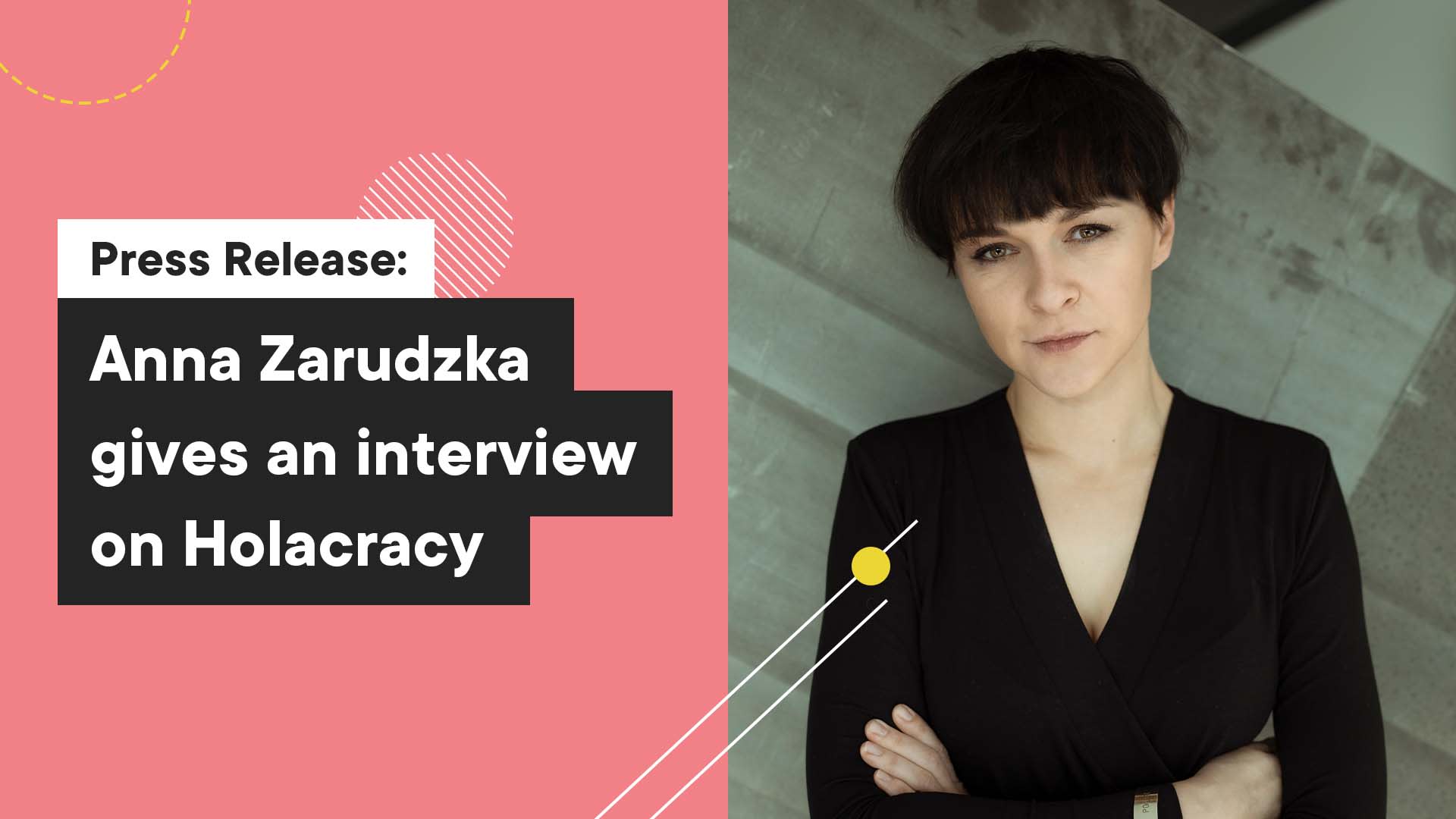Press Release: Anna Zarudzka gives an interview on holacracy
Recently, our Co-CEO Anna Zarudzka met with Mariusz Chrapko - a man of many talents. Mariusz is a business consultant by day and a podcaster by night. Anna had the opportunity to talk with Mariusz about Agile, holacracy, self-organization, and everything that comes with it. Read on to find out if Anna would rather be a mythical Daedalus or Icarus, and why holacracy is a lot like crossing a street.

Table of contents
What is holacracy like according to our co-CEO
According to Anna, holacracy is organized in a similar fashion to a city - when you cross a road there’s no policeman standing behind you telling you when to go. You just look at the traffic lights and cross when they turn green. The same goes for Boldare - people get to self-organize from day one, and for example, it’s up to new joiners to schedule their own meetings and training sessions.
But, being Agile and self-organized also affects the way Boldare works with its clients. We are trying to do more than just deliver great products to our clients - we’ve made it our mission to help them transform their management methods through software development and digital products. How do we go about it, exactly?
For example, after two or three months of working with a client, we can start working with their Agile teams on improving their self-organization. But it’s a process that takes time. Anna recollects a client that we’ve been working with for the past five years. It was only after two years that we began to work with them on their mindset, culture, and the way they build their teams.
What can new joiners expect from Boldare?
As the interview continues, Mariusz goes on to ask some questions from the perspective of someone looking to join Boldare. For example, what does joining the marketing team look like? Also, how would a person know what their responsibilities are?
Anna explains, that once the person is hired, they immediately get assigned to a marketing circle - an entity within our organization, a team so to speak, and are assigned a role; eg. a content writer. Over time, that person gets more comfortable in what they do, and they can choose to add or create another role if there’s a need to do so. However, it is not mandatory, and it’s absolutely fine to stay in a single role for years.
How to implement holacracy at your own firm?
At this point, Mariusz was wondering if a manager of a corporation wanted to introduce holacracy to their firm, would they be able to do it, but only in part? Anna’s answer is short: implementing holacracy all at once would be a great solution for managers. But for employees? Not so much.
Here, Anna talks about her own experiences - when preparing for implementing holacracy, she and her business partner were traveling around Europe, meeting with other businesses going through a similar process. Over many conversations with these people, one thing became apparent: the most effective transformations were the ones that were organic.
At the same time, Anna is convinced that regardless of the scale - whether it’s a small business or a corporation - it’s worth going through that process, even partially. She believes that businesses need to be a lot like a mythical Icarus - to boldly try new things, even if there’s a risk of getting burned.
How to make a major decision in a holacratic company
Anna points out that in terms of the decision-making process, the only thing that needs to be happening in a self-organized business are changes to the structure. To that end, there’s a specific format that needs to be followed, called the governance process. The key to this is objection - anyone involved in a governance process can raise an objection to an idea that is being discussed. This ensures that the debate and discussion are more wide-ranging, and that every person has the opportunity to be heard. Most of the strategic decisions at Boldare are made this way.
Being self-organized: pros vs. cons
Anna admits that there are costs to holacracy and self-organizing, both in terms of money and time. For example, it would be cheaper to simply pay for a traditional manager to rate someone’s performance or to make a hiring decision.
But being self-organized has plenty of benefits. A great example for Anna is how the entire organization is able to transform and survive different kinds of changes. Anna recollects a situation where there was a difficult decision to be made at Boldare. Back then, the entire organization (180 people at the time) was able to sit down and have a serious discussion where anyone could raise an objection. At the time, Anna was thinking to herself: This is surreal. I feel like I’m in some kind of movie. Then, one of the employees decided to raise an objection to the matter that was being discussed, and his reasoning was heard out. In a moment like this, Anna felt the impact of self-organization at Boldare.
Anna sees the benefits in holacracy, even in the little things - like when she sees that in her team there are people who are growing and slowly becoming truly modern leaders. It’s also a great moment for Anna when she can leave a team because she knows that they can handle things on their own.
Anna Zarudzka on holacracy - afterword
Mariusz wrapped up the conversation with:
they say that a good conversation is like a good black coffee - it will keep you awake at night. I already feel that my blood pressure went way up.
It was his way of saying that talking to Anna was intellectually stimulating. The entire conversation is available in Polish, as a part of a podcast “Menadżer plus”. You can listen to the full episode here.
Share this article:







